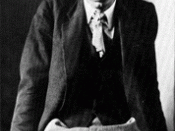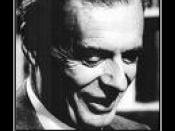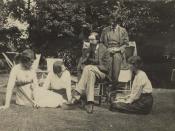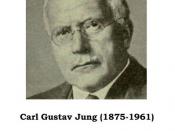Psycho-Cybernetics is a self-improvement text that describes psychological theories, techniques and exercises to help individuals rewire their subconscious, negative habits. Unfortunately, the book was written in 1960 and many of the psychological and scientific concepts the book centered around have been disproved. Nonetheless, the basic thesis of the book and the methodology are not unreasonable.
The author speaks at length about his personal philosophies, of Freudian and Jungian schools of psychology, western science, neurology and mechanical engineering to reinforce his self-image and confidence training methods. He utilizes different aspects of these concepts (as they were in 1960) to reinforce his argument that through repetitive reinforcement of positive self-image, humans can increase their potential for greatness.
In the first chapter, Dr. Maltz states his thesis in the form of a very basic psychological principle, that a human's view of self and self-image are determined through repetitive messages and behavior patterns throughout their life and especially in childhood.
These patterns will greatly influence and help determine they type of success the individual will be able to achieve. He also discusses at length his theory that creativity is the single human characteristic that distinguishes people from animals and that creativity itself is a divine gift from God.
While pouring through this book, I could not help from wondering why Dr. Matlz made reference to existing philosophies and psychological theories (at the time of printing), yet rarely made direct citations or references to the creators of the theories or the theories themselves. For instance, there are numerous references to Karl Jung. Dr. Maltz discusses Jung's theory of the collective unconscious but calls it "the universal mind" which in itself is a term coined by Aldous Huxley in the novel, "The Doors of Perception". Additionally, he talks at length about the human Id, Ego and Superego through both metaphor and indirect reference, yet he fails to speak about many Freudian concepts directly. This sloppy scientific practice made it easy to question the scientific basis the author was using to attempt to reinforce his claims. However, if one forgets the science and examines the book as more of a straight philosophical text, it becomes an easier reading exercise.
After the third chapter, the book begins discussing specific methods and exercises for self-improvement through thought and meditation. It talks of ways to repetitively view the person who you think you are and the person who you wish to become while developing the individual imagination. It discusses methods of visualization that prompt individuals to examine themselves from the broad view of the Ego down to individual behavior patterns (both positive and negative). It also promotes rational thinking (stoicism) when dealing with everyday negotiations and social situations.
The final three quarters of the book discuss different methods to strengthen the self-image. Each method is accompanied by real world examples and personal anecdotes.
Overall, the techniques discussed in Psycho-Cybernetics seem like they might work in theory. The common-sense approach the book takes towards positive thinking is a good tool at helping people look at the world in a positive way. However, the publishers should consider updating the science the author leans on as fact. Not only does the dated nature of the text weaken the arguments, but it tends to give the book a parody feel to it.







